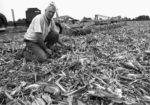Advertise Follow Us
Articles Tagged with ''Wheat''
Managing Carbon Improves Soil Organic Matter And Yields
Dwayne Beck offers insights about ways crop residue can lead to healthier soils and greater crop production for the long run.
Read More
Do More With Direct-Seeding And Limited Moisture
Thanks to direct seeding, Washington landowners spend more dollars, but end up with higher returns.
Read More
Don't Tell This No-Tiller Continuous Corn Won't Work
Ray McCormick has been profitably growing corn on corn without the disease and insect outbreaks that threaten to keep many no-tillers in their standard rotations.
Read More
Tackle No-Till Small Grain Pest Concerns
Try these profit-building ideas for controlling weeds, diseases and insects in no-tilled wheat and barley.
Read More
What I've Learned from No-Tilling
Cover Crops Offer Big Yield Boosts If Done Correrctly
No-tillers can find success by committing to, selecting and buying their seed early, planting early and controlling the cover crop early and thoroughly the following spring.
Read More
What I've Learned from No-Tilling
Rotations, Cover Crops Key To Improved Yields
Visits to leading no-tillers provided revelations and guidance that are still being put to use in long-term no-till fields that get better and better.
Read More
What I've Learned from No-Tilling
After A Simple Start, No-Till Opened Doors Around The World
No-tilling saved our land and put me in touch with like-minded growers around the globe.
Read More










